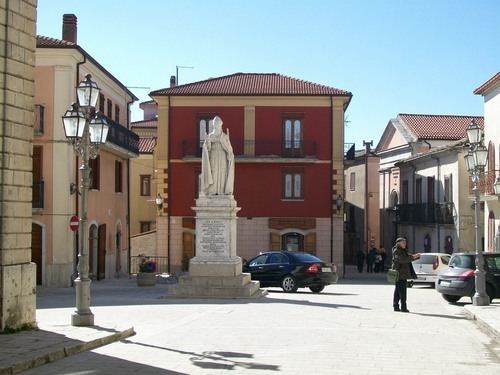Elevation 914 m (2,999 ft) Local time Tuesday 7:24 AM Postal code 83051 | Frazioni Ponteromito Demonym(s) Nuscani | |
 | ||
Weather 8°C, Wind N at 5 km/h, 86% Humidity Points of interest Santa Croce, piazzetta Vasellai, Statua di Sant'Amato | ||
Nusco is a town and comune in the province of Avellino (Campania region) in the south of Italy, east of Naples, with c. 4,400 inhabitants. It is situated in the mountains between the valleys of the Calore Irpino and Ofanto Rivers.
Contents
- Map of 83051 Nusco Province of Avellino Italy
- History
- Ecclesiastical History
- Main sights
- Twin towns
- References
Map of 83051 Nusco Province of Avellino, Italy
History
Hannibal crossed this area during the Punic Wars. As the legend goes, some of Hannibal's elephants became ensconced in the mud of the river to the east. As his elephants drowned the General mourned the death of these great beasts. As such, the river that extends through this valley became known as, and remains, the Ofanto (a corruption of Italian "elefante") River.
The Lombards built in Nusco a castle to defend the valley from the Ofanto river to the Calore one. It played a very important role between Irpinia's people until the 17th century. In the 1656 a plague struck Irpinia killing up to a third of Nusco’s population. In addition to its drastic effect on people, the plague irrevocably changed Nusco’s social structure. It started to lose its economic power, and until the second half of the 20th century Nusco’s history was strictly linked to the history of the Church.
For years the town experienced the poverty and misery of rural towns. Vestiges of feudal relationships left the peasant farmers with little richness. In the late 19th century, families left Nusco for other, wealthier regions of Italy, as well as for new opportunities in South America and the United States. These emigrants from Nusco never forgot their roots. Some of them returned to their homeland.
The earthquake in 1980 did not destroy the most ancient and important buildings.
Ecclesiastical History
...
